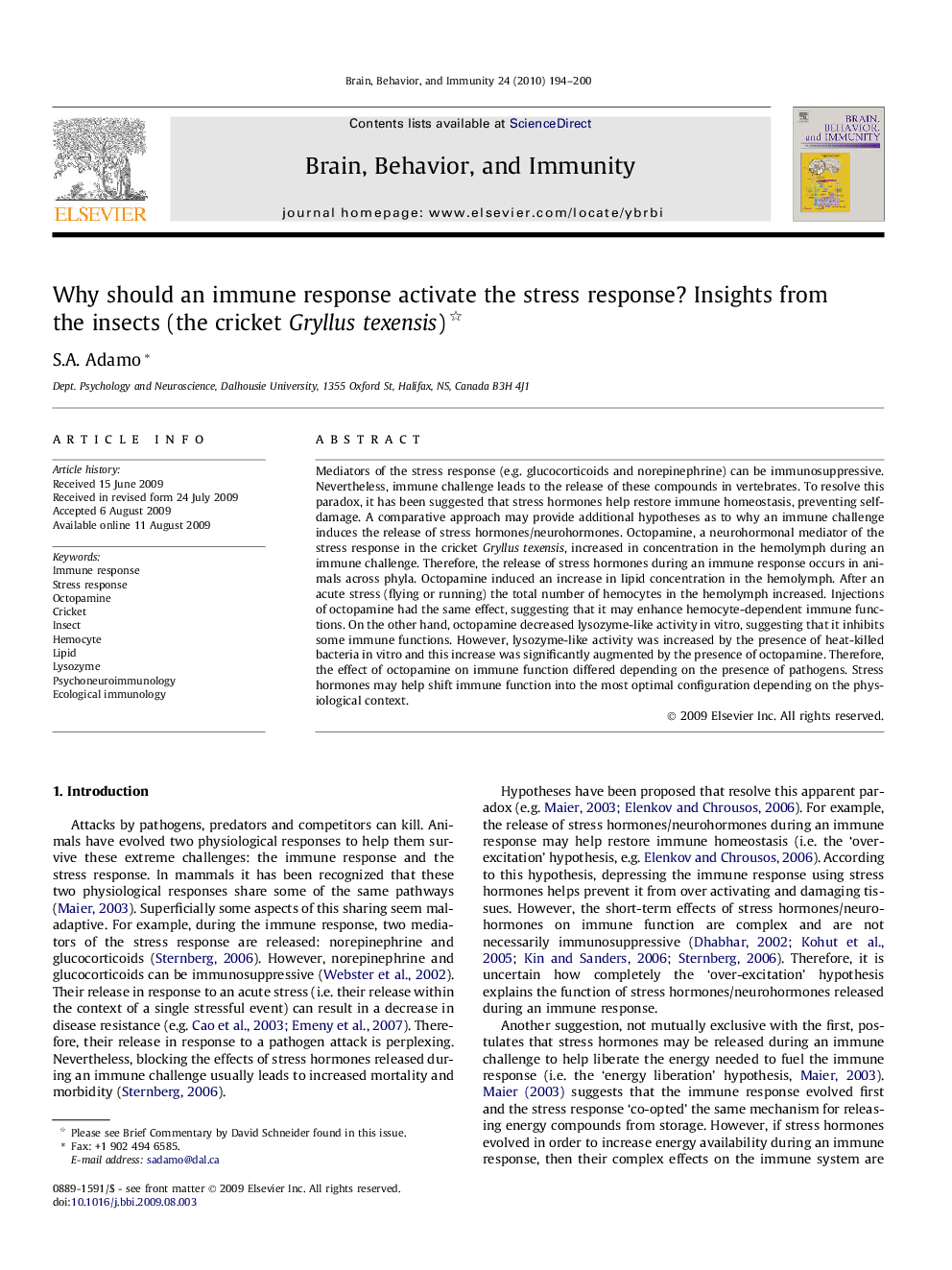| Article ID | Journal | Published Year | Pages | File Type |
|---|---|---|---|---|
| 922703 | Brain, Behavior, and Immunity | 2010 | 7 Pages |
Mediators of the stress response (e.g. glucocorticoids and norepinephrine) can be immunosuppressive. Nevertheless, immune challenge leads to the release of these compounds in vertebrates. To resolve this paradox, it has been suggested that stress hormones help restore immune homeostasis, preventing self-damage. A comparative approach may provide additional hypotheses as to why an immune challenge induces the release of stress hormones/neurohormones. Octopamine, a neurohormonal mediator of the stress response in the cricket Gryllus texensis, increased in concentration in the hemolymph during an immune challenge. Therefore, the release of stress hormones during an immune response occurs in animals across phyla. Octopamine induced an increase in lipid concentration in the hemolymph. After an acute stress (flying or running) the total number of hemocytes in the hemolymph increased. Injections of octopamine had the same effect, suggesting that it may enhance hemocyte-dependent immune functions. On the other hand, octopamine decreased lysozyme-like activity in vitro, suggesting that it inhibits some immune functions. However, lysozyme-like activity was increased by the presence of heat-killed bacteria in vitro and this increase was significantly augmented by the presence of octopamine. Therefore, the effect of octopamine on immune function differed depending on the presence of pathogens. Stress hormones may help shift immune function into the most optimal configuration depending on the physiological context.
